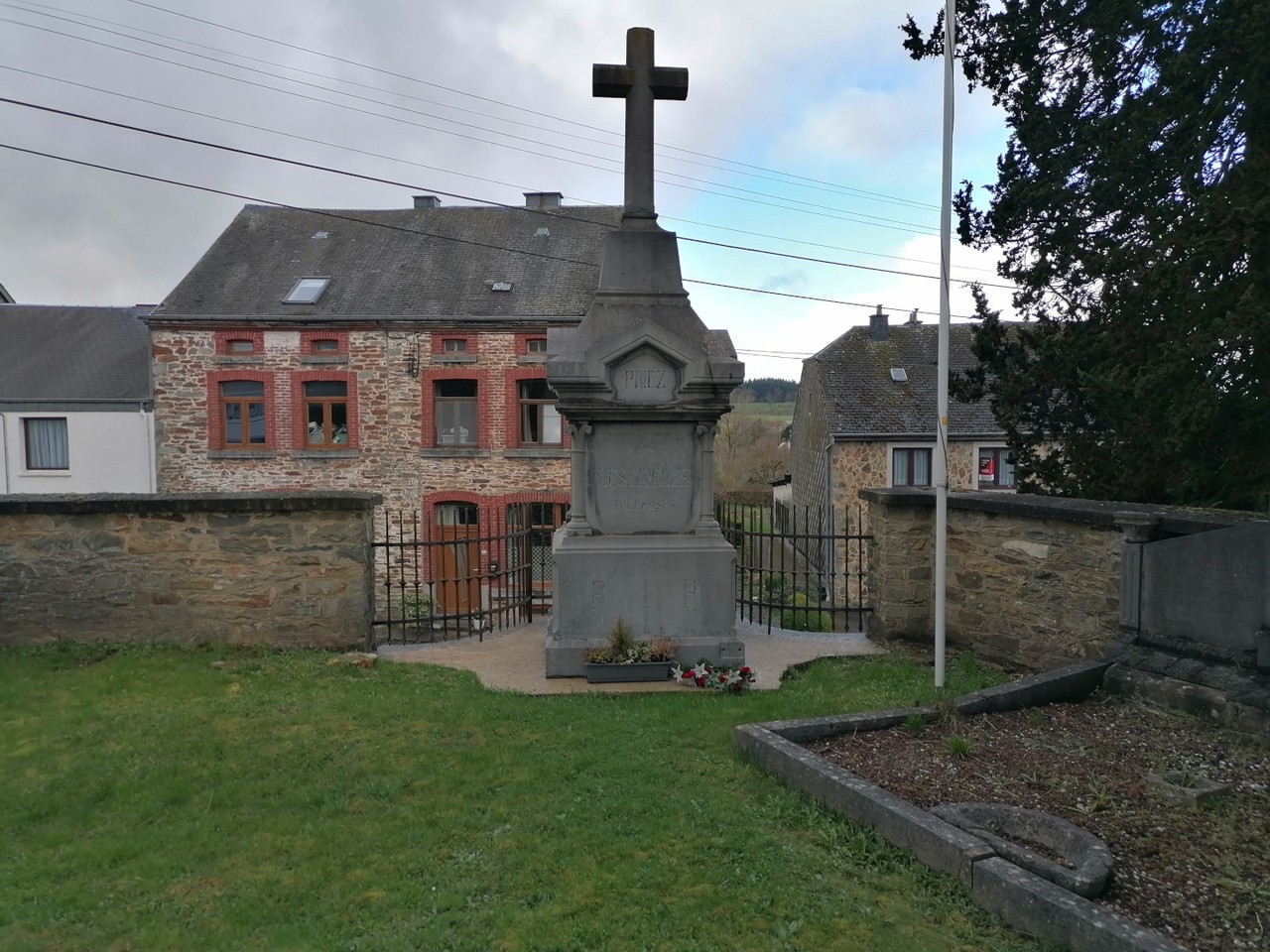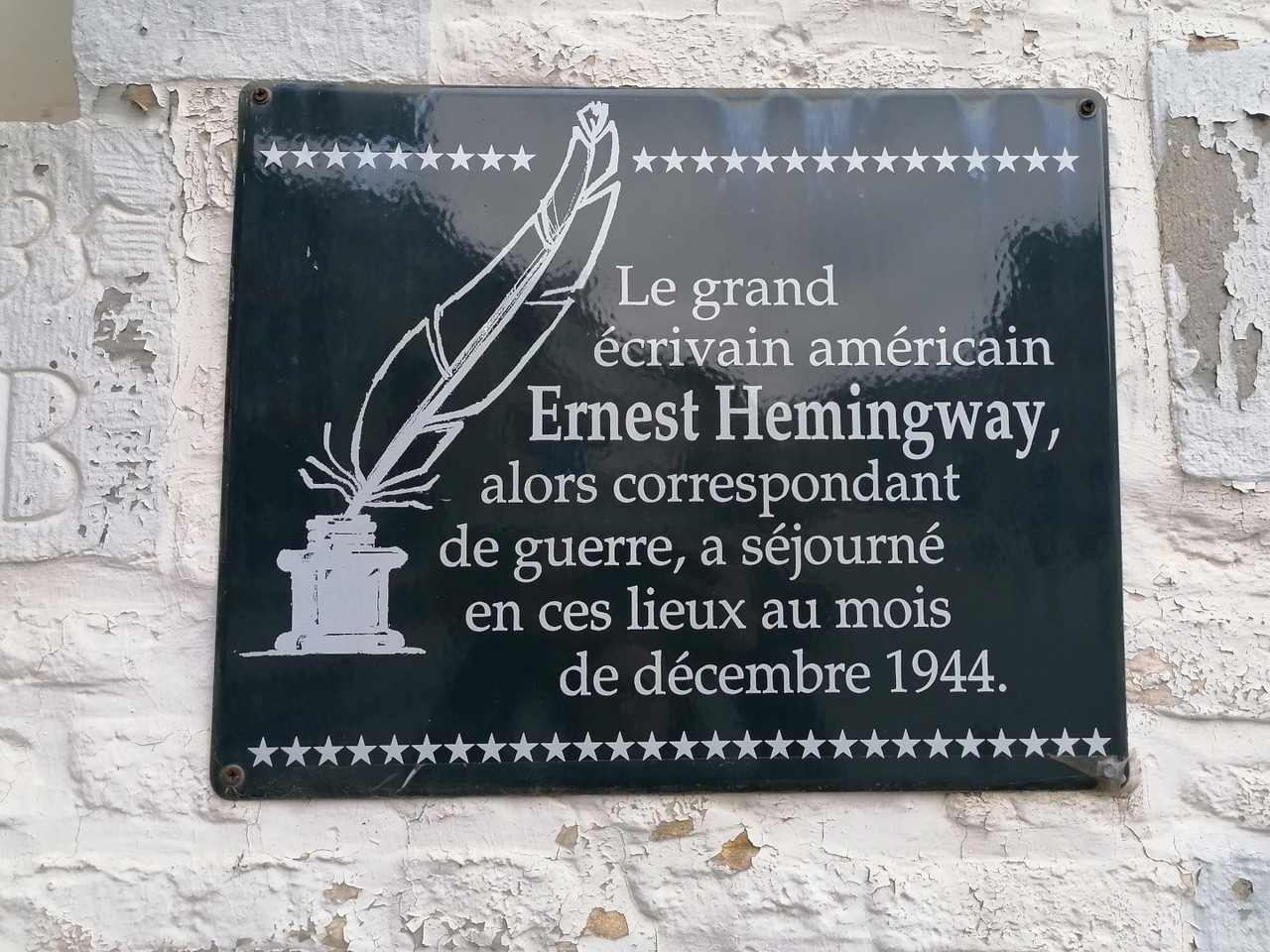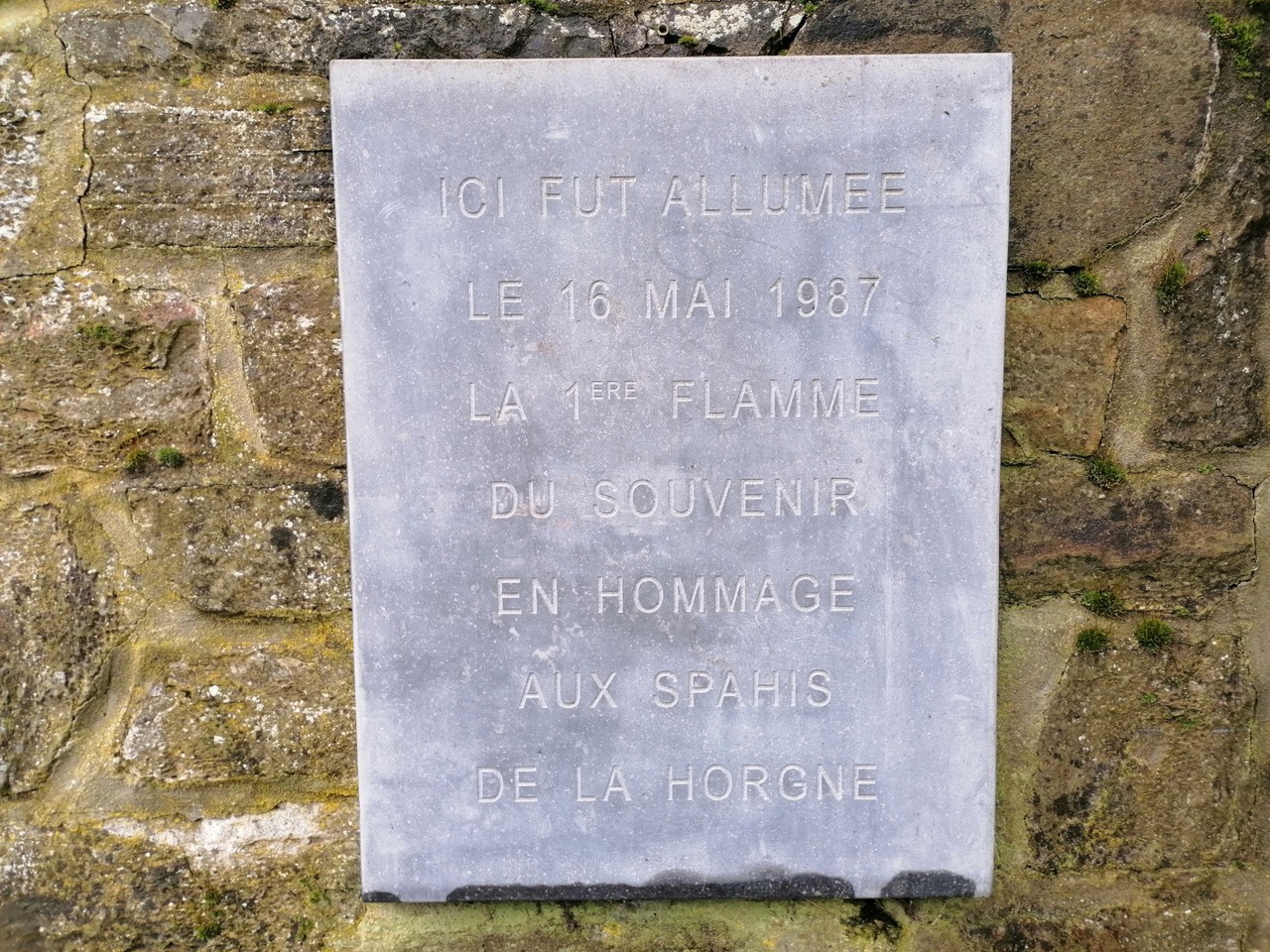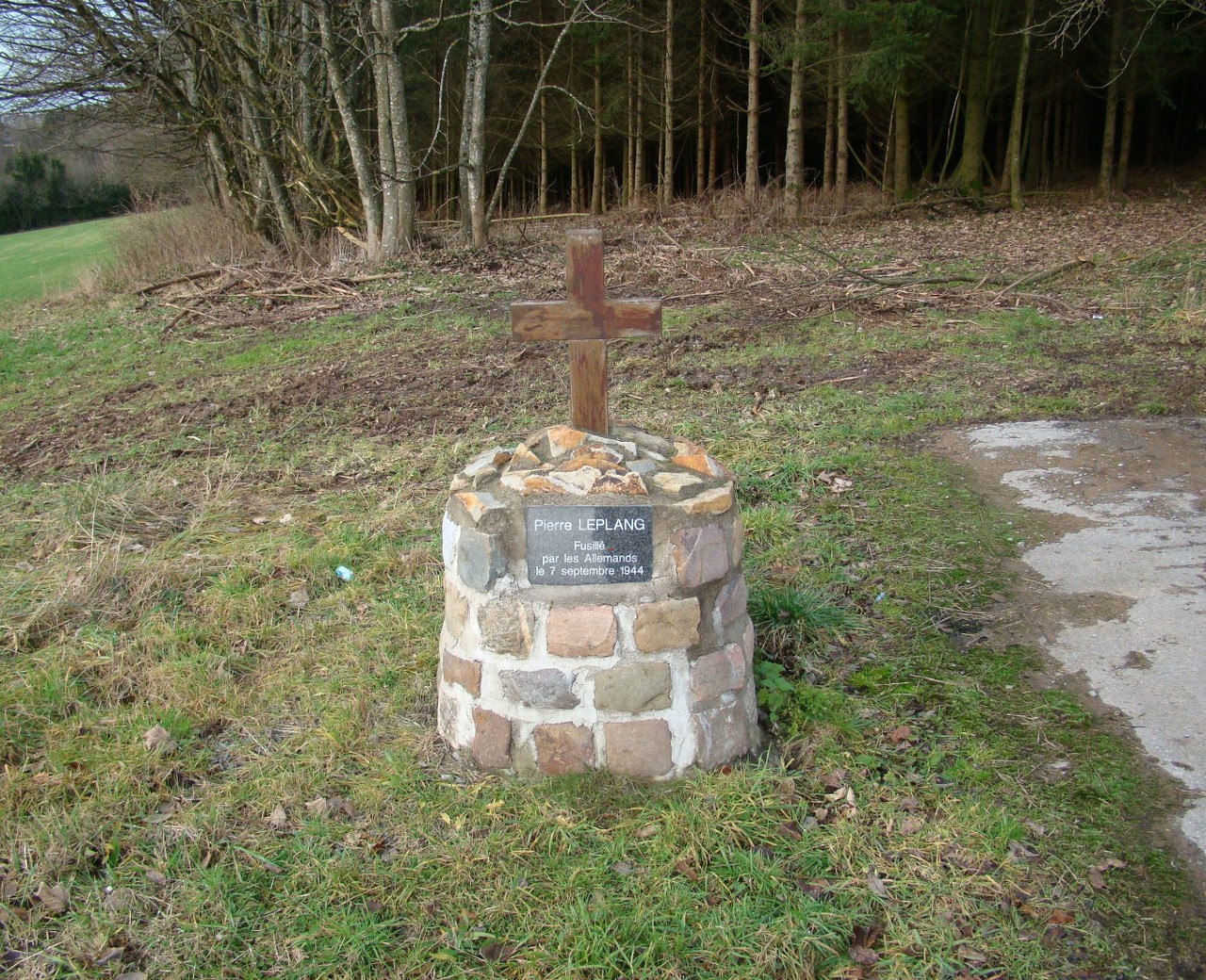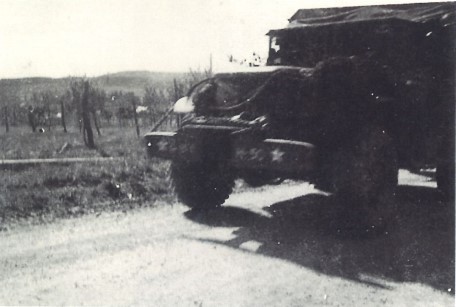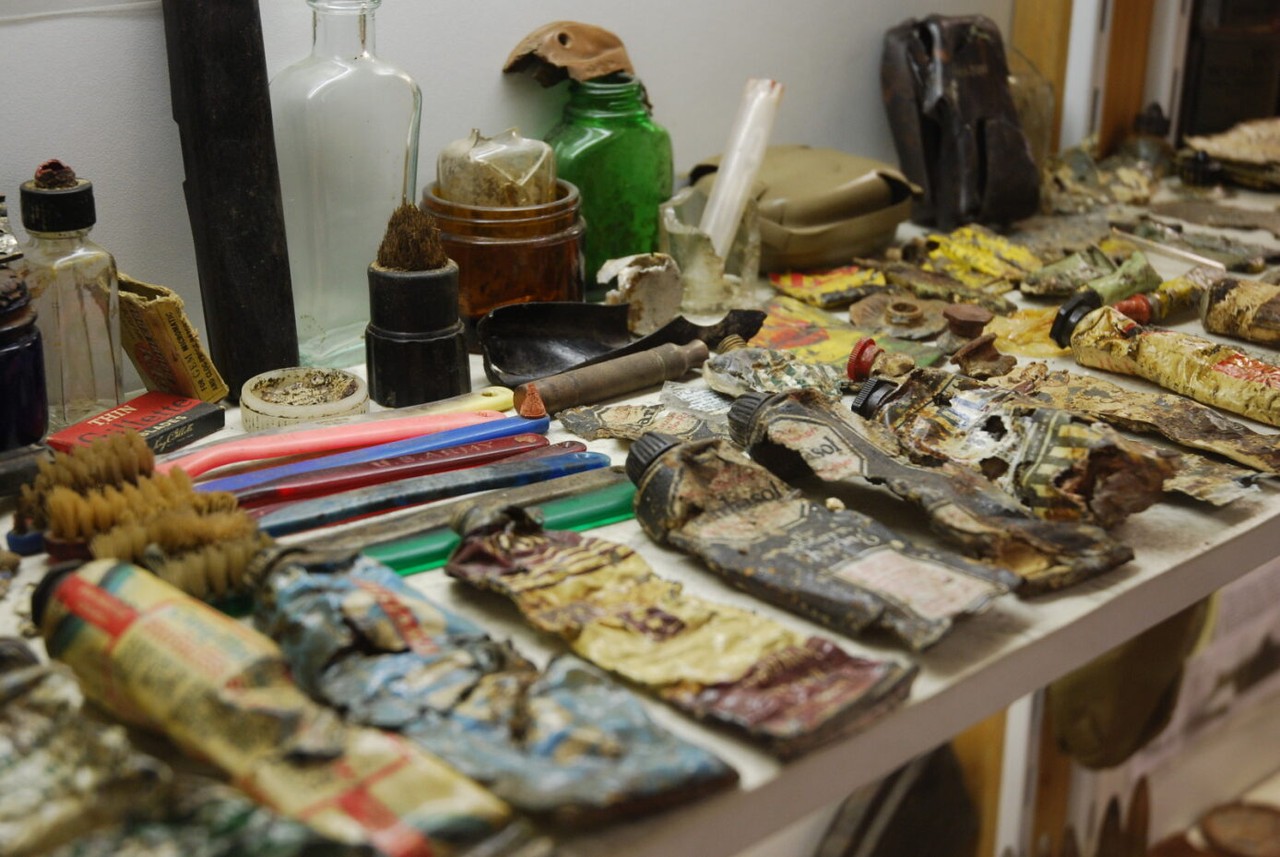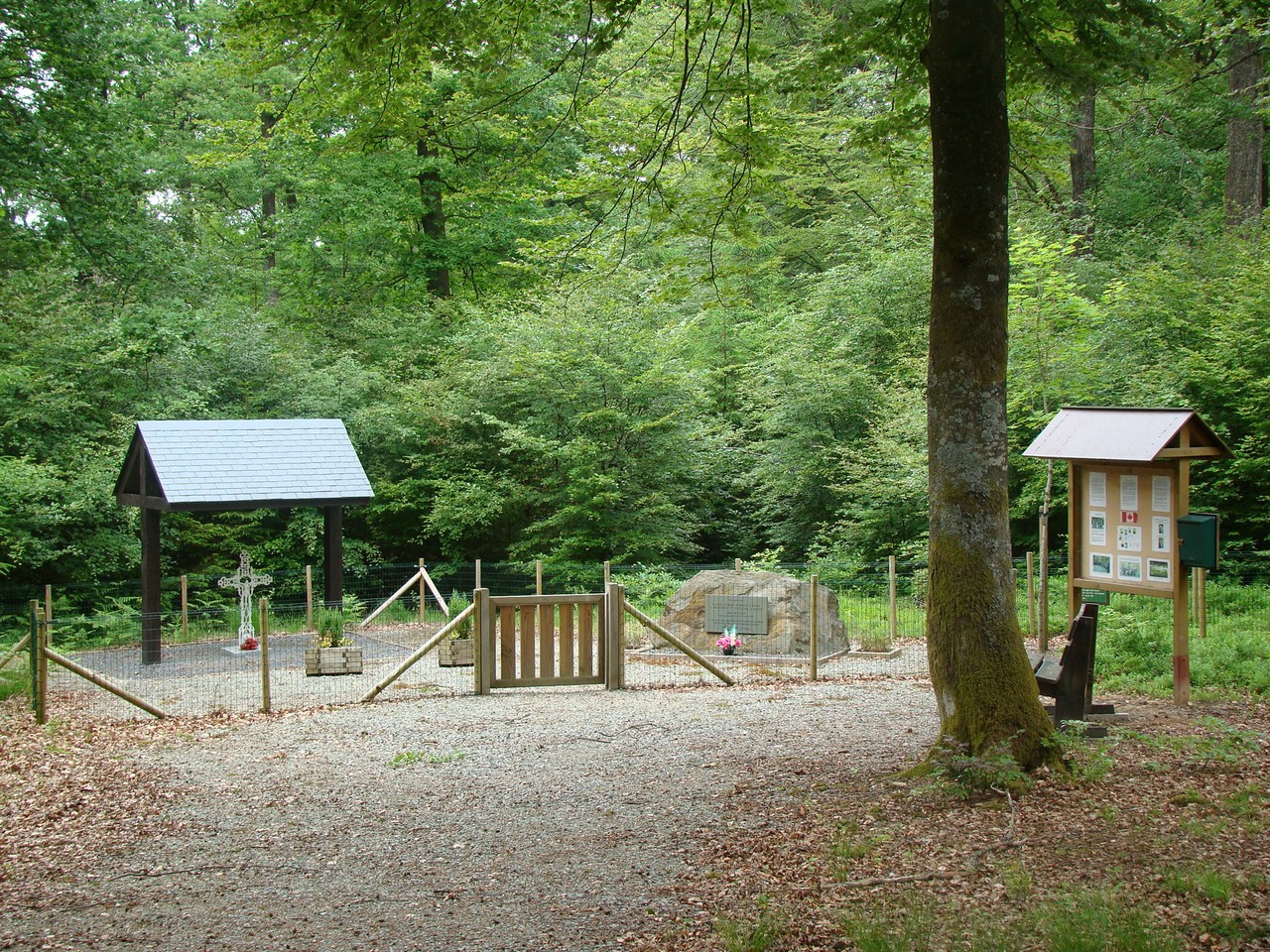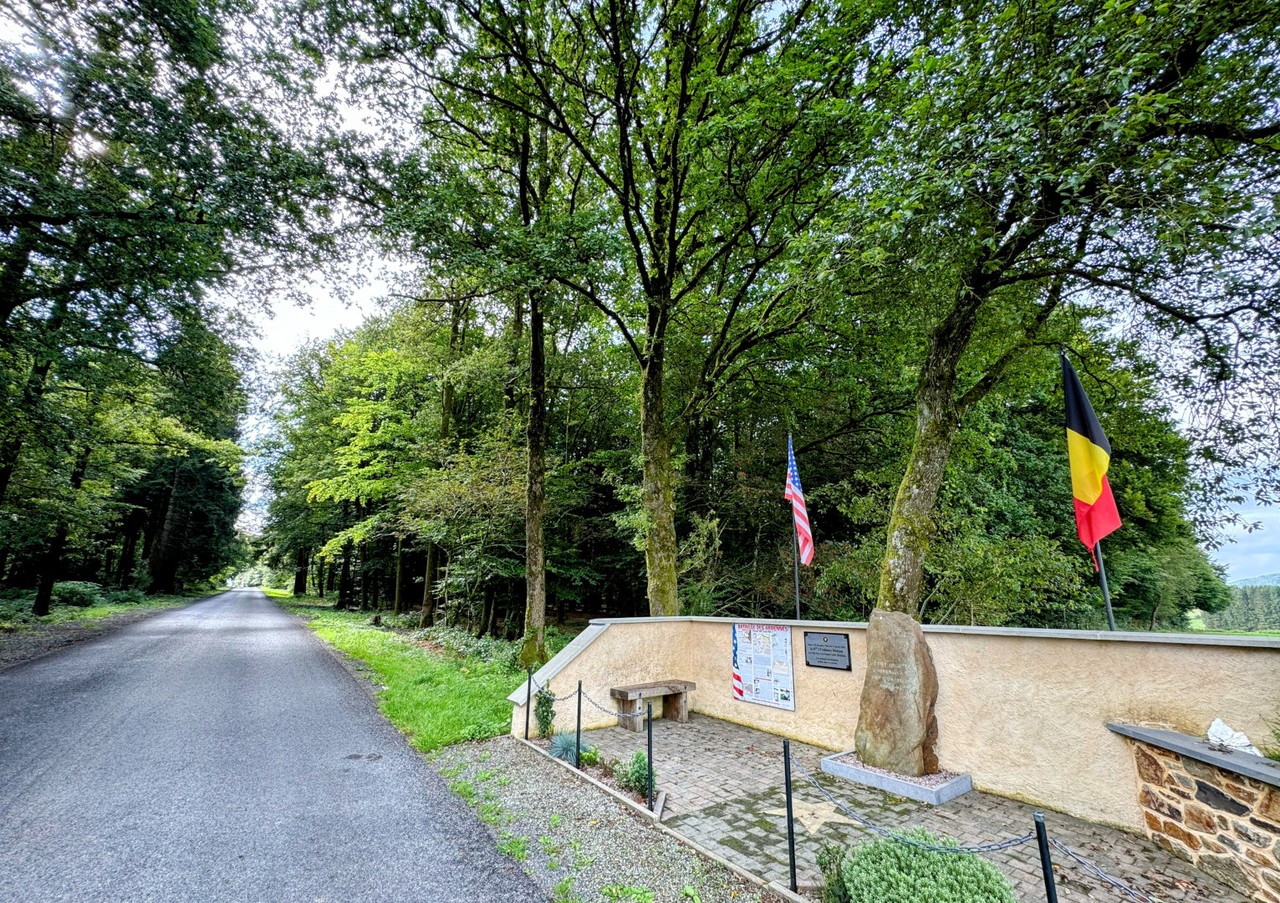Site of the fall of a flying bomb
Belgia
Oznacz
Plan
Udostępnij
Trasa
A relief is painted on the façade of this building, marking the site of a house destroyed in 1944 by a German army flying bomb.
In November 1944, Saint-Hubert had been liberated for more than two months. The German troops had been replaced by American troops and life was returning to normal....
On 25 November 1944, the town was once again plunged into horror. A tragic event brought the people of Saint-Hubert back to the harsh reality of war. In the early afternoon at 12:40, a V1, short for Vergeltungswaffe 1 (retaliation weapon no. 1), crashed just a few metres from Saint-Gilles church.
The bomb caused considerable damage. At the site of impact, it completely flattened a group of dwellings, including the dispensary, and desolation reigned in the neighbouring houses. Windows smashed, doors torn off, gutters ripped out, walls and roofs collapsed. In addition to the material damage, the human toll was tragic, with many people injured and five dead. One family was tragically decimated: Marie Antoinette Rondeux (known as Manette), her husband Roger Chalon, their son Constant (known as Stany) born on 21 June 1943 and grandfather Constant Chalon, who was present that day to share the family meal at Number 1 Avenue Nestor Martin, were all killed. In the church shed, Léopold Chardome had resumed his work and was sawing wood for Dean Schméler. The explosion mowed him down in the middle of his work.
When the houses were rebuilt, Eugène Wagner had the memory of this horrific day engraved in the cement cladding on the façade of Number 7. At the top of the left-hand pilaster is the emblematic crucifix stag, and on the right-hand side is the silhouette of a V1 flying bomb with the Latin inscription ‘DOMO DESTRUCTA ANNO MCMVI’. The flight of five birds evokes the five victims.
Treści stworzone z naszym partnerem

Adres
Avenue Nestor Martin 5, 6870 Saint-Hubert






